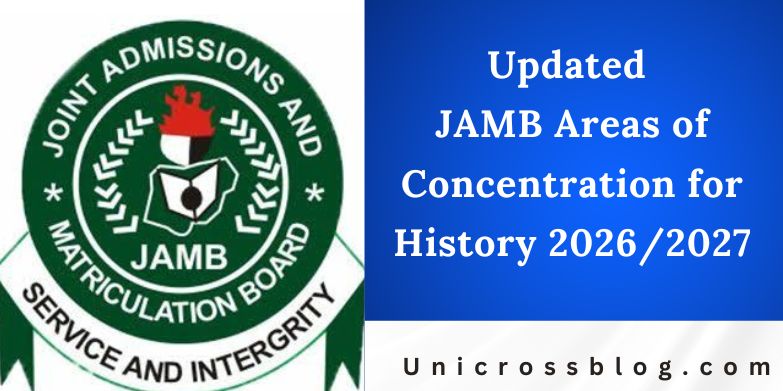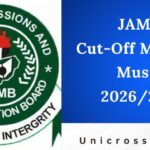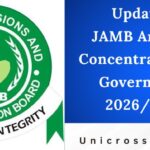The Joint Admissions and Matriculation Board (JAMB) Unified Tertiary Matriculation Examination (UTME) is a critical gateway for Nigerian students aspiring to higher education. For the 2026/2027 session, the History subject remains a vital choice, particularly for those pursuing degrees in humanities, social sciences, law, or education. History in JAMB tests candidates’ understanding of key historical events, processes, and interpretations across Nigerian, African, and world contexts. The areas of concentration are derived from the official JAMB syllabus, which emphasizes factual recall, analytical skills, and chronological awareness.
This updated guide for 2026/2027 reflects minor refinements to the syllabus, including enhanced focus on decolonization movements, gender roles in historical narratives, and economic impacts of colonialism. These updates align with contemporary educational priorities, ensuring relevance to global and local discourses. Candidates should prioritize these areas to optimize preparation, as JAMB questions often draw directly from them.

Introduction to JAMB History
History as a JAMB subject covers the evolution of societies from pre-colonial times to the modern era. The exam format includes 50 objective questions, lasting 40 minutes, with a scoring scale where each correct answer earns 2 marks. Success requires not just memorization but the ability to connect events, causes, and consequences. The syllabus is divided into three main sections: Nigeria Pre-colonial, Nigeria since 1800, and Africa and the Wider World. By concentrating on these, candidates can achieve scores above 70 percent.
Key Areas of Concentration
1. Nigeria Pre-Colonial This section forms the foundation, covering indigenous political systems, economies, and cultures before European influence. Expect questions on governance structures and social organizations.
- Land and peoples of Nigeria: Geographical features, ethnic groups, and migrations. Understand the diversity of over 250 ethnic groups and their historical interactions.
- Early societies and states: Focus on Nok culture (500 BCE-200 CE), known for terracotta sculptures; Igbo-Ukwu bronze works (9th century); and Benin Kingdom’s centralized monarchy.
- Centralized states: Study Oyo Empire’s cavalry-based administration, Kanem-Bornu Caliphate’s Islamic governance under the Sefawa dynasty, and Hausa city-states like Kano and Katsina.
- Village democracies: Examine Igbo segmented societies, Tiv age-grade systems, and Ijaw riverine communities, highlighting consensus-based decision-making.
- Inter-group relations: Trade routes (trans-Saharan and Atlantic), wars (e.g., Oyo vs. Nupe), and cultural exchanges like Islam’s spread via Wangarawa scholars.
Candidates should note the economic interdependence, such as salt from Sahara traded for kola nuts in the south.
2. Nigeria Since 1800 This is the largest section, emphasizing colonial conquest, resistance, and post-independence developments. Recent syllabus updates stress economic exploitation and nationalist ideologies.
- The Sokoto Caliphate: Uthman dan Fodio’s 1804 jihad, establishment of the caliphate, and its administrative reforms under Usman and Bello. Key battles include Burumburum (1804) and administration via emirates.
- European penetration: Factors like industrial revolution, abolition of slave trade (1807), and legitimate trade. Missionaries (e.g., Lander Brothers 1830) and explorers (Baikie 1854).
- Colonial conquest: Menirvana’s model colony (1861), Lugard’s amalgamation (1914), and resistances like Aba Women’s Riot (1929) and Egba Uprising (1918).
- Colonial administration: Indirect rule (Lugard), Native Authority Ordinance (1916), and economic policies like taxation leading to revolts.
- Nationalism: Formative phase (NCNC 1944), INC demands (1914), and key figures like Herbert Macaulay and Nnamdi Azikiwe. Constitutional developments: Clifford (1922), Richards (1946), Macpherson (1951), Lyttleton (1954).
- Independence and post-1960: Balewa era, 1966 coups, Biafran War (1967-1970), Gowon regime, and return to civilian rule (1979, 1999). Economic policies like indigenization decrees.
Updated emphasis: Analyze gender roles, e.g., Funmilayo Ransome-Kuti in women’s movements.
3. Africa and the Wider World This section connects African history to global events, with new focus on Pan-Africanism and Cold War influences.
- Pre-colonial trade: Trans-Saharan (gold-salt), Indian Ocean networks, and Atlantic slave trade (15th-19th centuries). Impacts: Depopulation and cultural syncretism.
- European scramble: Berlin Conference (1884-1885), partition of Africa, and protectorates like Uganda (1894).
- Africa and Europe: Scramble causes (nationalism, resources), high imperialism, and resistance (e.g., Samori Toure’s Mandinka Empire).
- Africa and the wider world: Scramble effects, World Wars’ impact (African troops in WWI), and independence waves (Ghana 1957, Algeria 1962).
- Trans-Saharan trade: Routes, goods (ivory, slaves), and states like Ghana Empire (4th-11th centuries).
- The Atlantic slave trade: Volume (12 million Africans), triangular trade, and abolition efforts (Sierra Leone as settlement).
Updated topics: Decolonization in Portuguese Africa (e.g., Mozambique 1975) and economic legacies like structural adjustment programs.
Preparation Tips
To master these areas, start with a timeline chart for chronological events. Practice past questions from 2015-2025 to identify patterns; for instance, 40 percent of questions are on Nigeria since 1800. Use active recall techniques, like summarizing each topic in 100 words. Group study helps debate interpretations, such as the merits of indirect rule. Allocate study time: 30 percent pre-colonial, 50 percent modern Nigeria, 20 percent global. Revise weekly and simulate exam conditions. Health matters: Sleep 7-8 hours, eat balanced meals, and manage stress through breaks.
Incorporate multimedia: Watch documentaries on the Biafran War or Sokoto Jihad for visual retention. Track progress with mock scores aiming for 250+ aggregate. If weak in analysis, practice essays on “Causes of Nigerian Nationalism.”
READ ALSO: JAMB Subject Combination for History and International Studies
FAQs
How many questions come from each section in JAMB History?
Typically, 15-20 from Nigeria since 1800, 10-15 from pre-colonial, and 10-15 from Africa/world. Focus on the modern section for quick wins.
Are there changes in the 2026/2027 syllabus compared to previous years?
Yes, minor updates include more on gender history and economic globalization. Core topics remain stable, so past syllabi are 90 percent applicable.
What is the best way to study dates and events?
Use mnemonics, e.g., “Berlin 1884” as “Big Elephants Run Boldly.” Link dates to stories, like 1804 jihad as “Fodio’s fiery start.”
Can I score high in History without reading textbooks?
No, textbooks provide depth. Supplement with summaries, but avoid shortcuts; JAMB tests comprehension.
How do I handle interpretive questions?
Read options carefully; choose evidence-based answers. Practice distinguishing fact from opinion, e.g., “Was indirect rule successful?”
What score is needed for History in competitive courses?
Aim for 60+ (120/200) for law or history majors. Combine with strong English and government scores.
Is the History exam mostly objective or essay?
Fully objective (multiple-choice). Speed and accuracy are key; no essays.
How often should I revise the syllabus?
Daily for weak areas, weekly full review. Last-month intensive: two full mocks per week.
Are there recommended note-taking methods?
Cornell method: Divide pages into notes, cues, and summary. Highlight causes/effects columns.
What if I forget a key event during the exam?
Use process of elimination. Recall related facts, e.g., from slave trade to abolition timeline.







